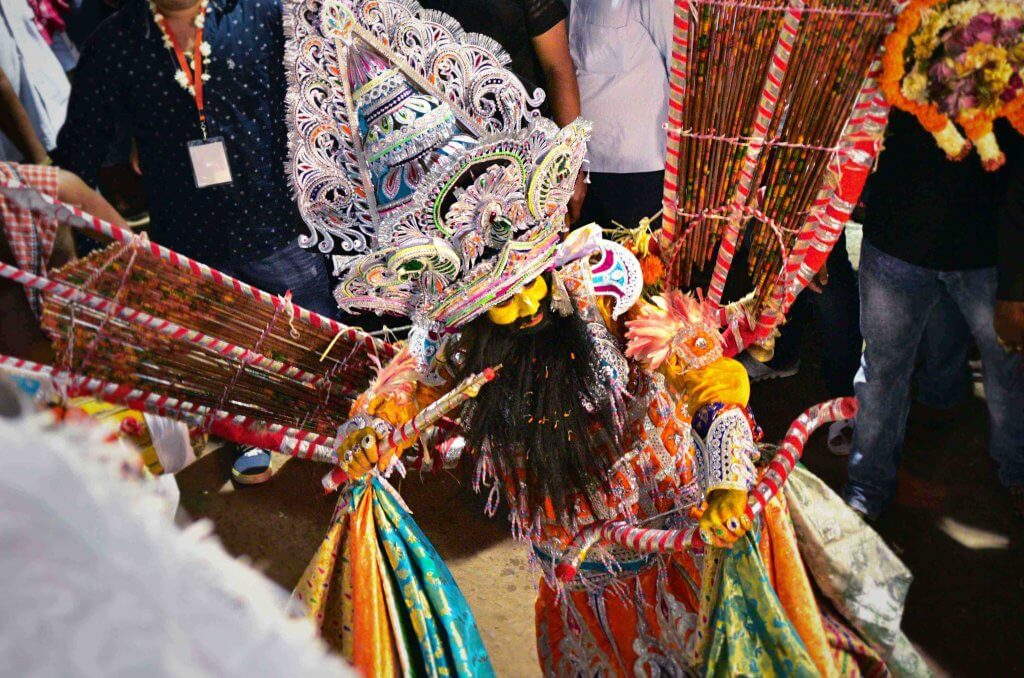Sahi Jata is the ancient open-air street theatre of Puri.

Since the 12th-century, the old city of Puri has been filled with a number of jagas (community halls) and akhadas (gymnasiums). These traditional institutions imparted martial, military knowledge by day and the tired men would revel in the arts by night. And so a unique culture surrounding the jaga–akhadas evolved, a product of which is the 800-year old Sahi Jata of Puri.
The Sahi Jata is annually performed in the nights of the month of Chaitra, and it covers the Ramayana story in several scattered bits and pieces. Some characters, like Parsurama and Rabana have direct links with the Jagannatha Temple, like all things in Puri do. All the characters tie huge decorative structures called medhas behind them. These medhas are also superfine examples of Puri’s solapitha craft. To walk through the seven ancient streets or sahis of Puri and dance with such huge and bulky medhas is no small thing.
Although it has characters from the Ramayana, the Sahi Jata is more about the pure stylistic dance performed in the streets than the story or dialogue. The dance itself is barebones; its core lies in the minute, nuanced movements that distill the elegance of the arts to act as striking displays of one’s power.
And that is the essence of the Sahi Jata, where one graceful swing of Parsurama’s axe, done elegantly to the intoxicating beat of the telingi baja, can delight a crowd of hundreds.
Name / Sahi Jata
Also / Sahi Jatra
Origin / 12th century
Place of origin / Puri, Odisha
Type / Narrative theatre
Topic / Ramayana and jaga-akhada culture
Condition / Endangered
Characters / Parsurama, Naga, Rabana, Hanumana